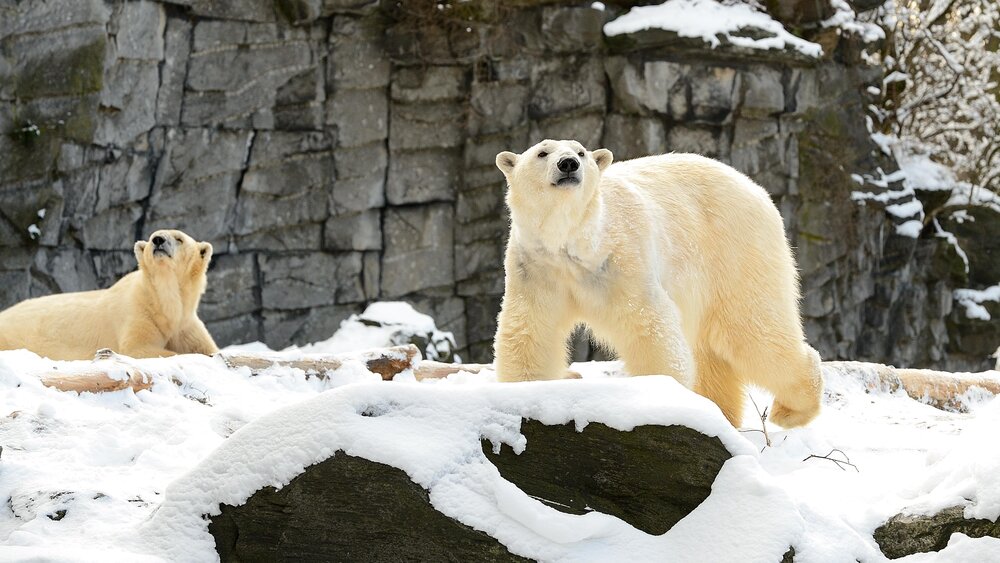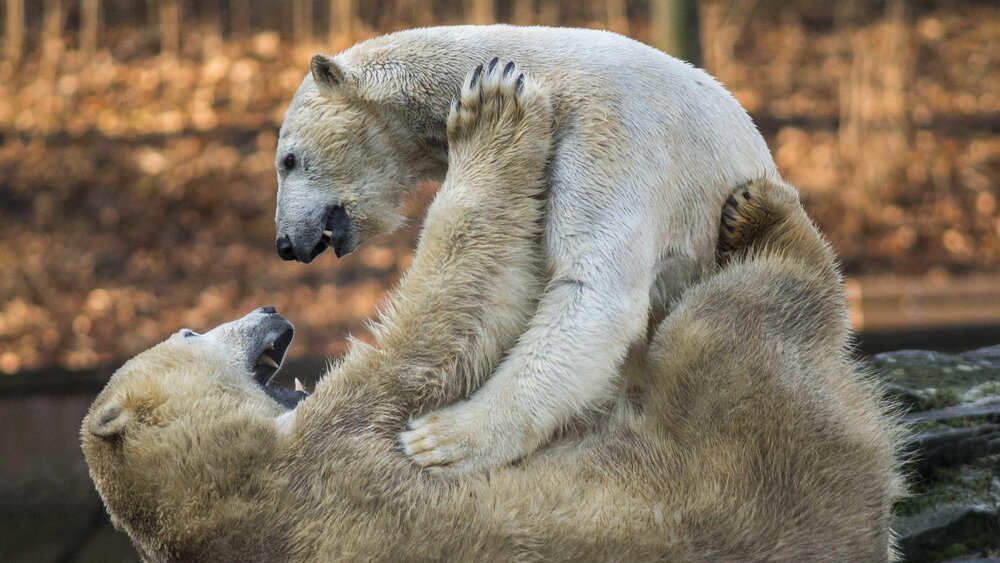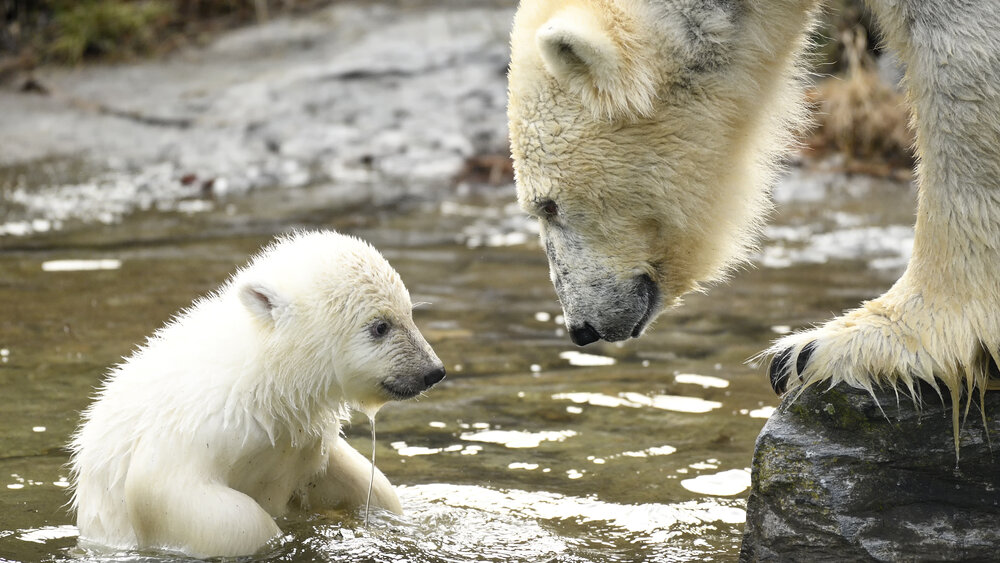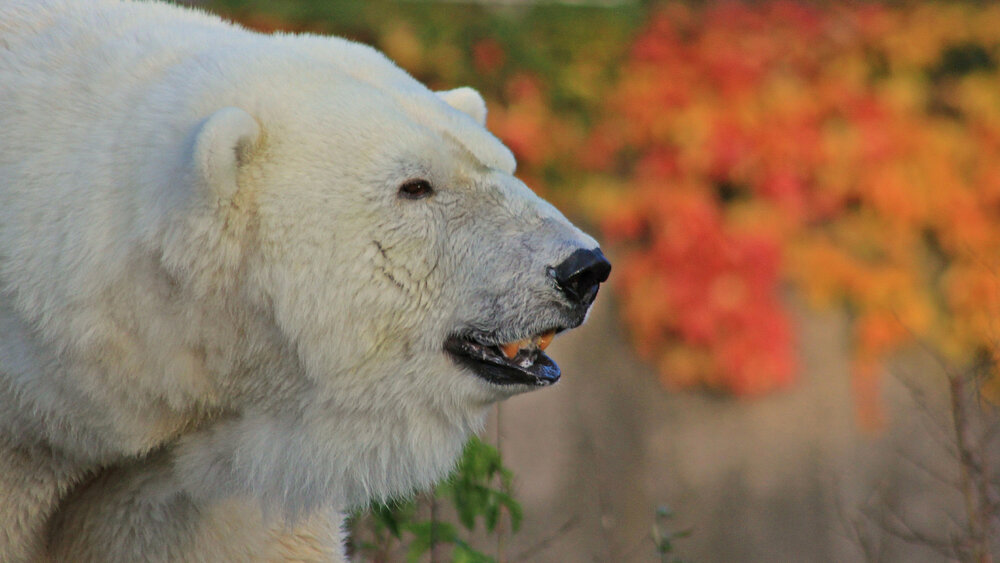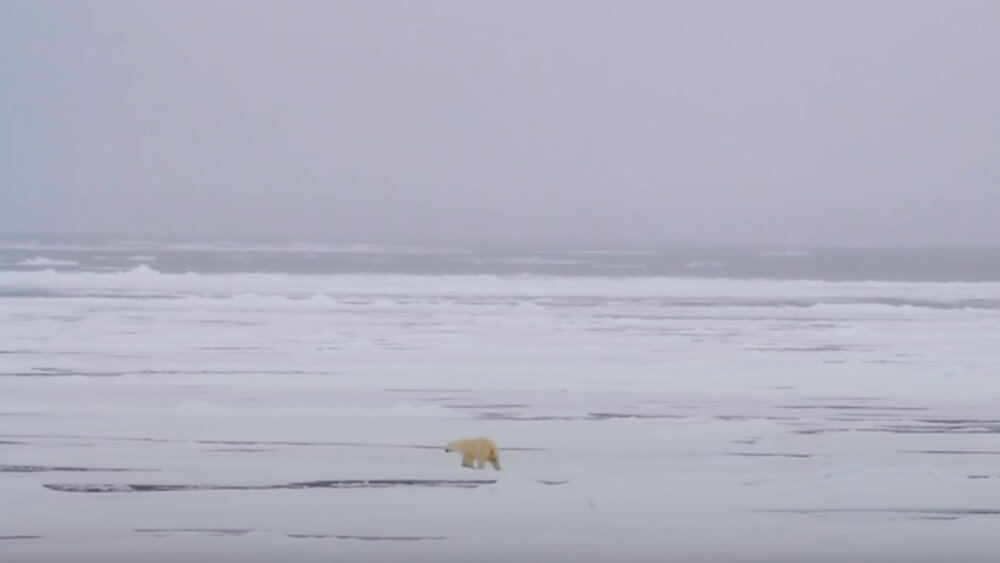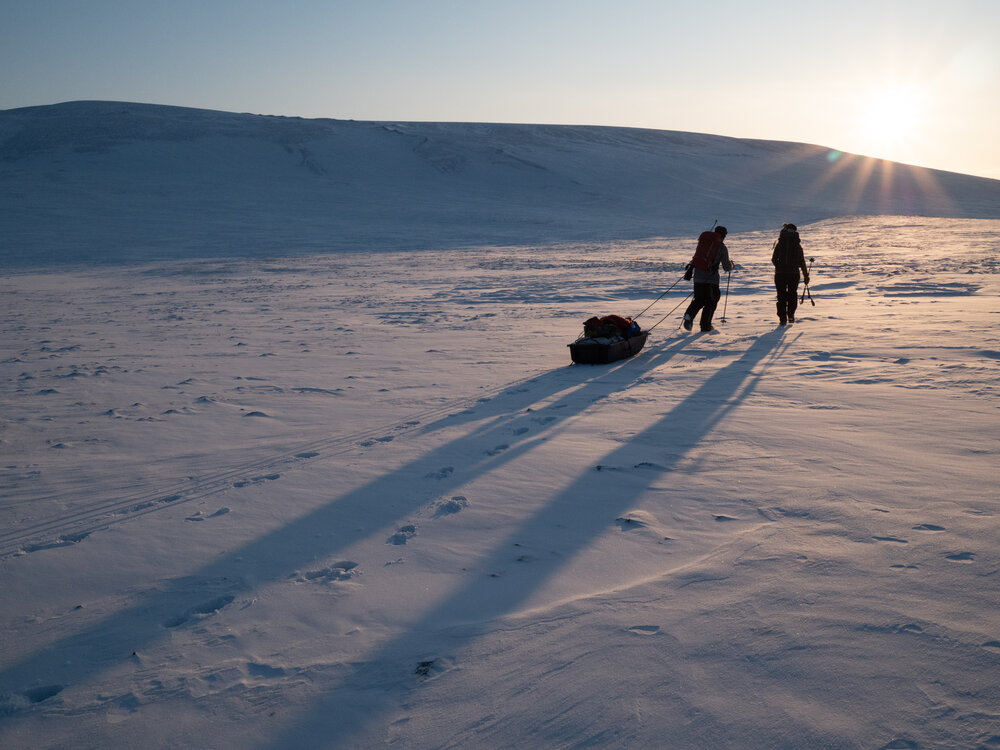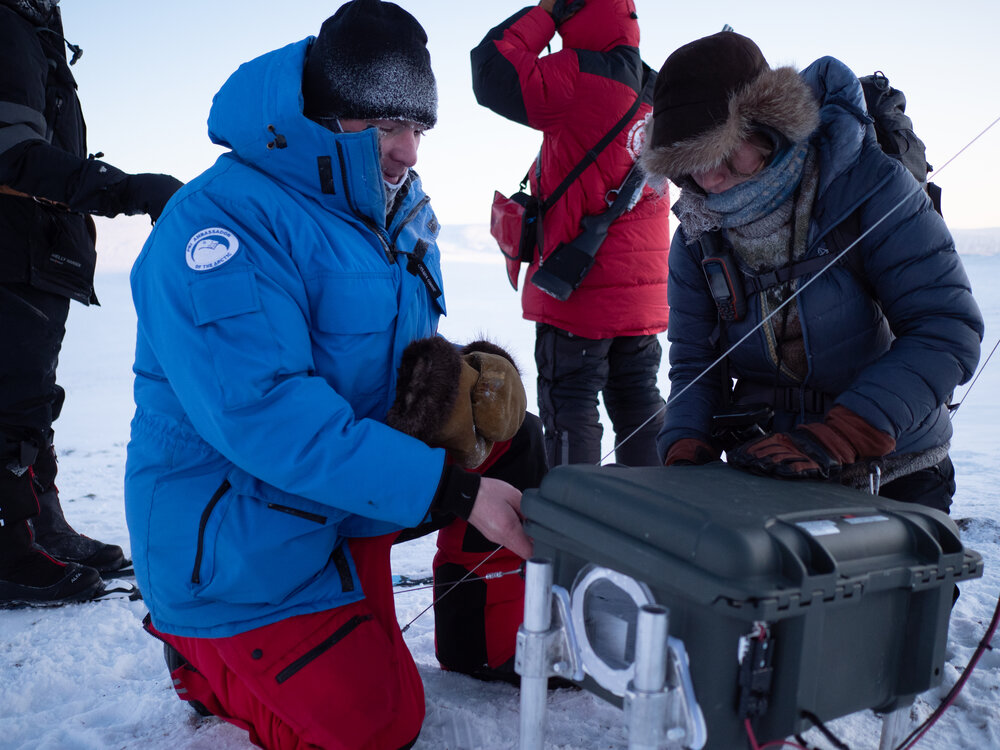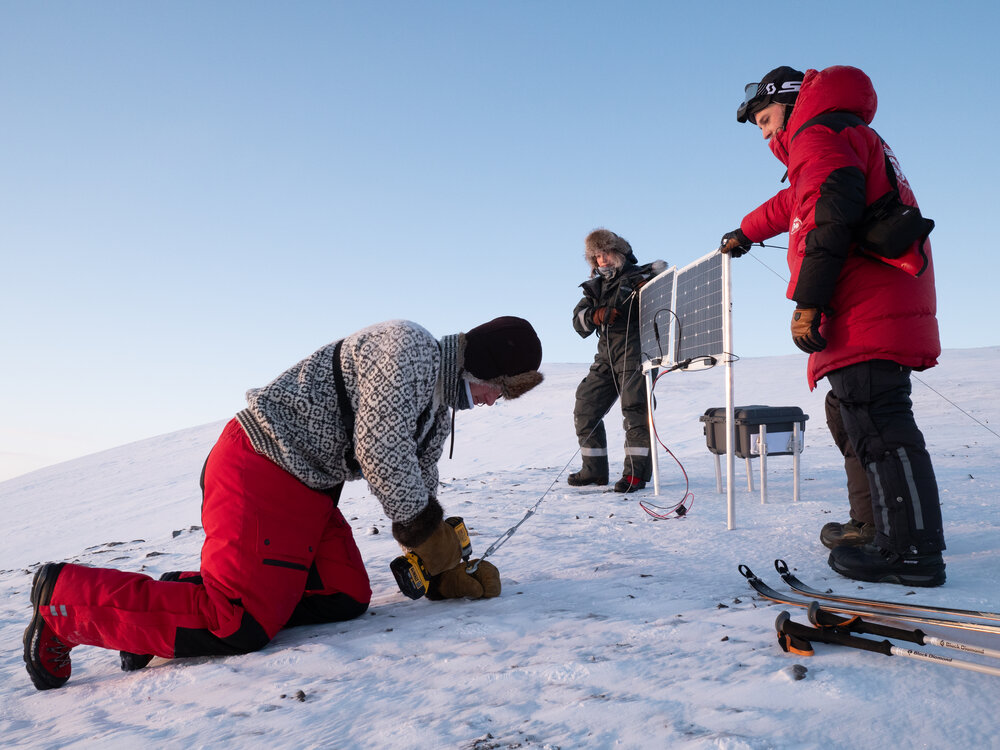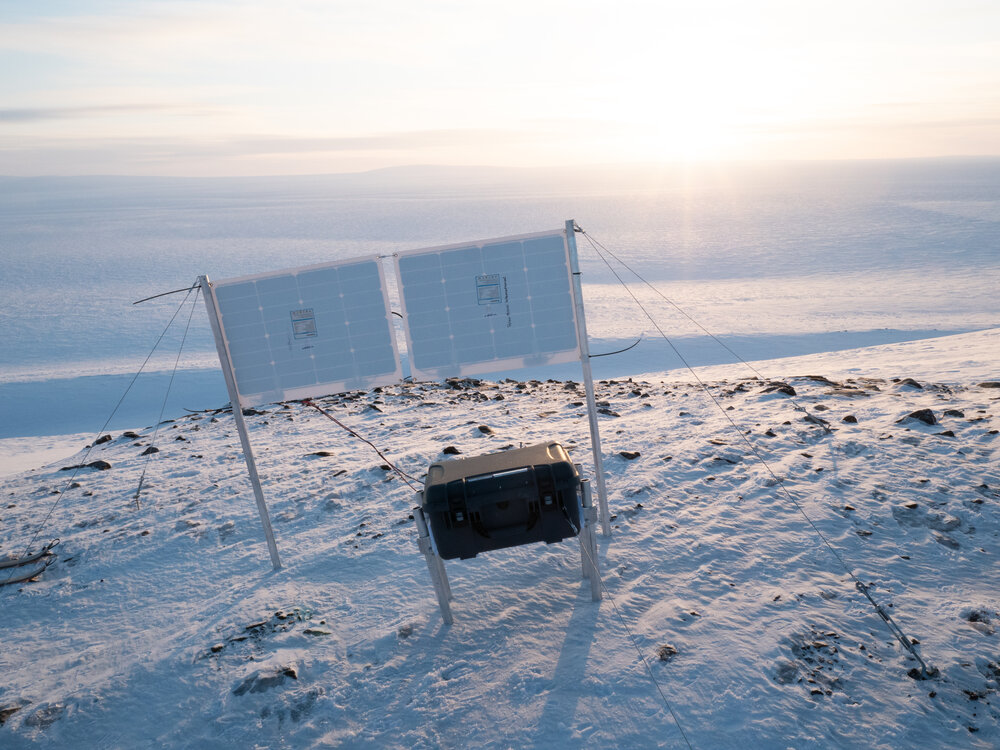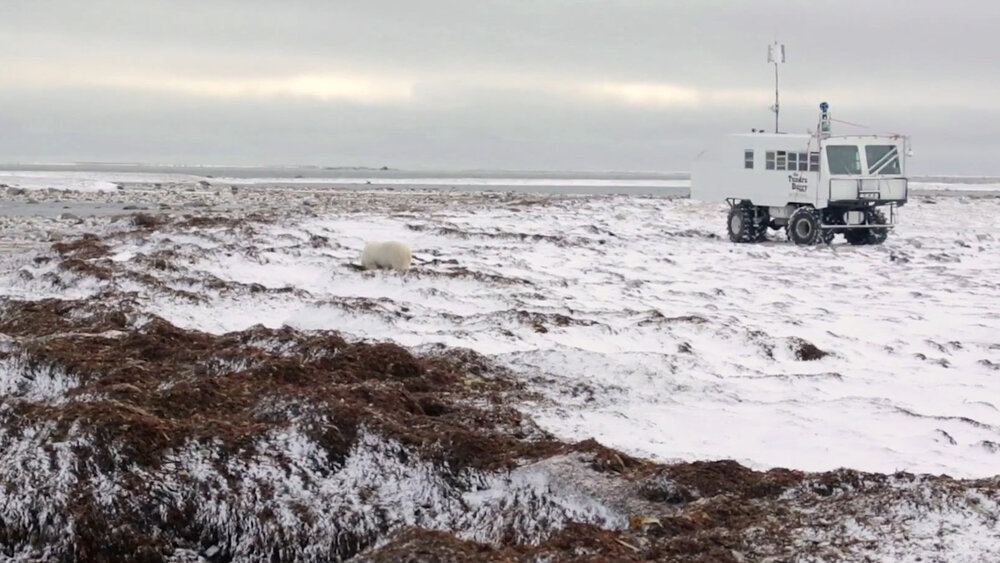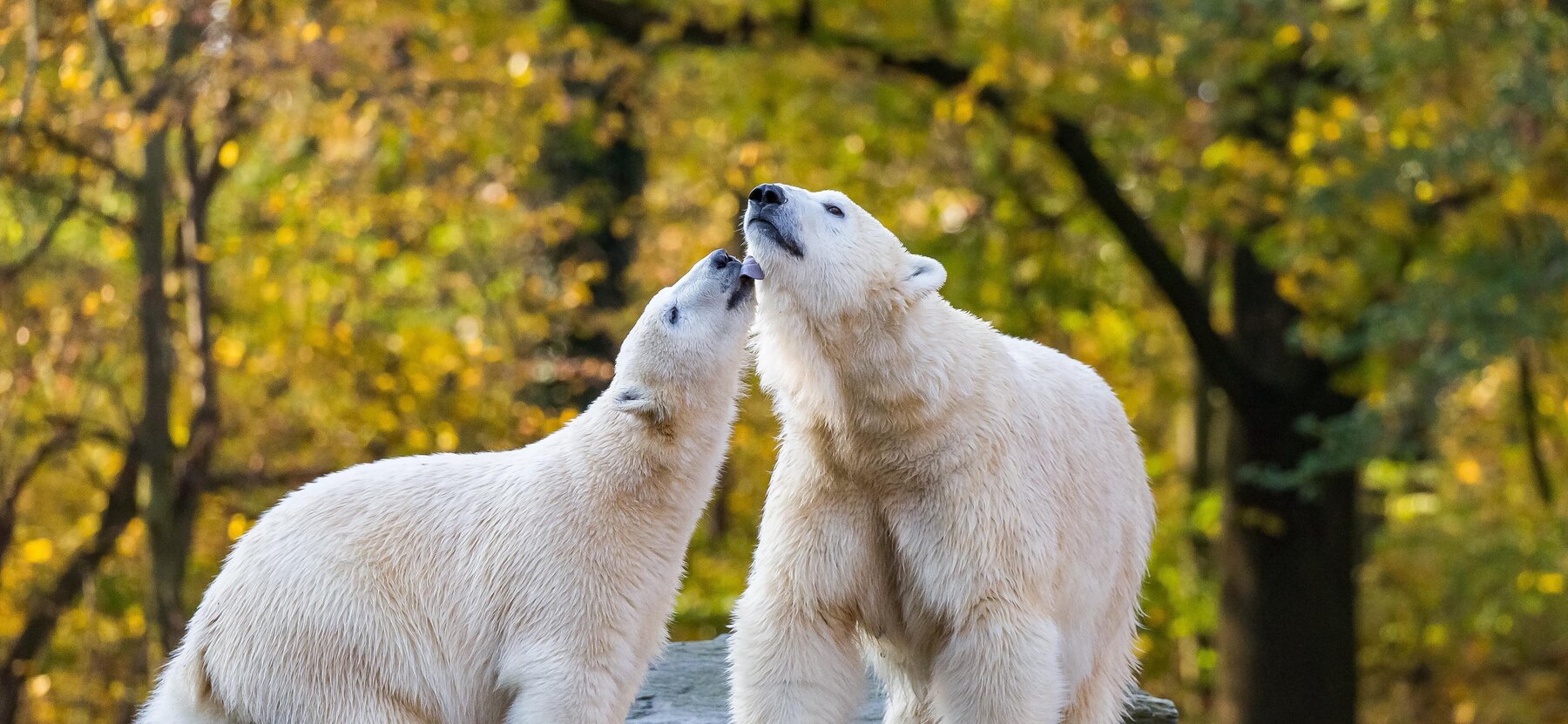
Polar bear
Zoo and Tierpark Berlin supports behavioural research into polar bears in the Arctic, with a view to establishing protected habitat areas.
Project facts
- Project name
Polar Bears International
- Species
Polar bear (Ursus maritimus)
- IUCN threatened status
Vulnerable (VU)
- Project location
The Arctic
- Greatest threat
Loss of habitat due to global warming
- Response
Conducting research into polar bear behaviour and habitats
Threat Categories of IUCN


Berlin bears
Berlin has a very special relationship with polar bears. The first polar bear arrived in the German capital in 1845 – just one year after Zoo Berlin opened. In 1951, Berlin partnered up with Karlsruhe Zoo to begin establishing a breeding group. The Tierpark got its first polar bears in 1955, and cute cub Knut, who was born at Zoo Berlin in 2006, achieved international fame. Like all polar bears in zoos around the world, our Berlin bears have a very important task: they are ambassadors that draw attention to the vulnerable status of their fellows living wild in the far north.
The Arctic habitat
The Arctic is the name of the region around the North Pole, beginning at the line of latitude called the Arctic Circle. It includes the Arctic Ocean and the northernmost parts of three continents – Asia, North America, and Europe. It features treeless Arctic tundra as well as deserts of snow and ice. With temperatures dropping as low as minus 70°C, it is an area hostile to life. And yet some remarkable plant and animal species have adapted to these harsh conditions. Among them is Earth’s biggest land predator, the polar bear. This Arctic hunter is perfectly equipped from head to toe for life at the North Pole.
Dependent on ice and snow
Diet: Polar bears need the surface of the ocean to be frozen so they can ambush their main prey, ringed seals, at their breathing holes. Catching these seals is the only way for polar bears to get the fat reserves they need to survive. Without ice, there are no holes; without holes, no chance to catch their prey.
Mating: The ice is also important to enable the solitary bears to find a mate. It connects separate areas of land, bringing polar bears together and giving them access to a wider gene pool. This is important for ensuring genetic diversity and preventing incest. Without this ice, the ideal mate is hard to find.
Young: Polar bears need snow to build their birthing dens. Females retire to the dens in the autumn, where they birth and rear their young. When spring comes, mother and babies venture out into the world. So without the snow, there would be no cubs.
Melting ice caps
The Arctic ice is not only vital for polar bears – it also functions as the Earth’s air-conditioning system, reflecting the light and warmth of the sun back into space. As the ice shrinks, less of this light is reflected and its warmth is absorbed by the ocean. This contributes massively to global climate change. Satellite data show that, since records began in 1979, the polar ice caps have shrunk by more than eleven percent every ten years.
Victims of climate change
Over the course of its history, planet Earth has been subject to frequent natural climactic fluctuations. Temperatures changed gradually over thousands of years, giving plants and animals time to adapt. However, today’s climate change, caused by human activity, is happening much too fast – making life very difficult for the plants and animals that share our planet. The impact of rising temperatures is most apparent in the region around the North Pole.
Water where once there was ice
Rising temperatures are causing the Arctic ice to melt. That means the polar bears’ territory, formerly so vast, is rapidly shrinking. Polar bears cannot hunt for seals in the water. And should the Arctic snowfall turn to rain, polar bear mothers will not be able to build the protective dens they need for their young. So the impact of climate change on these bears is manifold: with less opportunity to catch seals, the starving bears become increasingly weak and their young have a much lower chance of survival.
Bearing the brunt
As the search for a suitable mate becomes harder, fewer healthy polar bear cubs are born. The big white bears are also seriously affected by oil and gas extraction, marine pollution, and shipping. Another consequence of their shrinking habitat is increased run-ins with humans, as desperately hungry bears are more likely to venture close to human settlements. As a result of all these factors, polar bears have been classified as “Vulnerable” on the IUCN Red List of Threatened Species since 2006. Although the global polar bear population still stands at more than 20,000 individuals, their future looks bleak. Some experts fear that we may even witness the disappearance of this species within the next 50 years.
Combating global warming
The bears’ survival depends largely on humans working to combat climate change – for example, releasing significantly less carbon dioxide into the atmosphere and conserving the rainforests that act as the green lungs of our planet. But in order to save Earth’s largest land predator from extinction, it is also extremely important that we possess a deeper understanding of its natural behaviour in the wild. Scientists have to know what is “normal” behaviour for polar bears in order to recognise any changes in this behaviour, and to provide scientific recommendations for suitable conservation measures. Polar bear experts also need to know where the bears prefer to reside so that they can identify potential protected zones.
A helping hand from science
Scientists working for non-profit organisation Polar Bears International are, for example, placing cameras in the birthing dens of polar bears to find out when the mother leaves the den with her young, and how many cubs survive to this stage. Zoos are helping to save the polar bear by providing these fundamental research efforts with financial support and human resources. Currently, Zoo Berlin is assisting Polar Bears International with its research into altered breeding and hunting behaviour, as well as into the bears’ preferred retreats and migration routes in the wild. The aim is to establish protected zones where the animals can find enough food and raise their young without being disturbed. The particular research project we are funding uses the latest camera technology to allow scientists to observe the inside of polar bear birthing dens completely undetected.
Zoo and Tierpark Berlin were named an Arctic Ambassador Center in 2023 by the leading polar bear experts at Polar Bears International.
Photos: © KT Miller/polarbearsinternational.org
